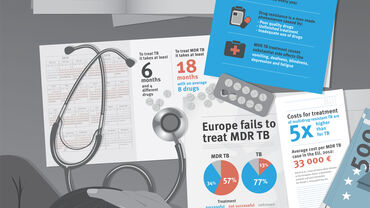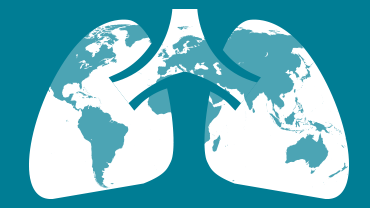Antimicrobial resistance - Tuberculosis
Antimicrobial resistance develops when treatment regimens are not properly administered or adhered to. It can also occur as a result of biological variations in drug uptake or substandard drugs. Multidrug-resistant (MDR) tuberculosis (TB) entails resistance to at least two of the most effective TB drugs, isoniazid and rifampicin. Extensively drug-resistant (XDR) TB includes additional resistance to any fluoroquinolone, and to any of the second-line injectable TB drugs (amikacin, capreomycin and kanamycin). Treatment of MDR TB lasts at least nine months. The shortest treatment regimen includes seven drugs taken for several months, involving a significantly higher risk for adverse drug effects. Costs of treatment for MDR and XDR TB are much higher than costs of treatment for drug-susceptible TB.
European context
The notification rate of MDR TB in the EU/EEA region has remained unchanged at 0.2 and 0.3 per 100 000 population, with an average of 1 300 cases reported each year. A little more than 20% of these cases have XDR TB.
In the EU/EEA, only about 40–45% of MDR TB patients have a successful treatment outcome. About 40–50% of the patients die, fail to respond to treatment or stop treatment. Treatment failure or ending treatment prematurely carries an increased risk of developing XDR TB. Patients with XDR TB have a worse treatment outcome compared to MDR TB patients. These rates are far below the 75% treatment success target defined by the Tuberculosis action plan for the WHO European Region 2016–2020.
A qualitative study in four EU countries, Healthcare system factors influencing treatment results of patients with multidrug-resistant tuberculosis, has determined key factors for achieving good treatment results in patients with MDR TB across the EU/EEA:
- timely diagnosis of drug-resistant TB through implementation of rapid molecular drug-susceptibility testing in accordance with national guidelines
- financial systems favourable for the treatment and support of MDR TB without financial barriers for patients
- intersectoral collaboration that addresses the emotional and social needs of patients, as well as their clinical needs, such as treatment regimen, co-management of substance dependencies and other co-morbidities
- motivated and devoted healthcare workers with sufficient mandate and means to support patients; and
- cross-border management of MDR TB cases with the development of collaborative mechanisms for a continuum of care between countries, including social support and reporting of treatment results.






